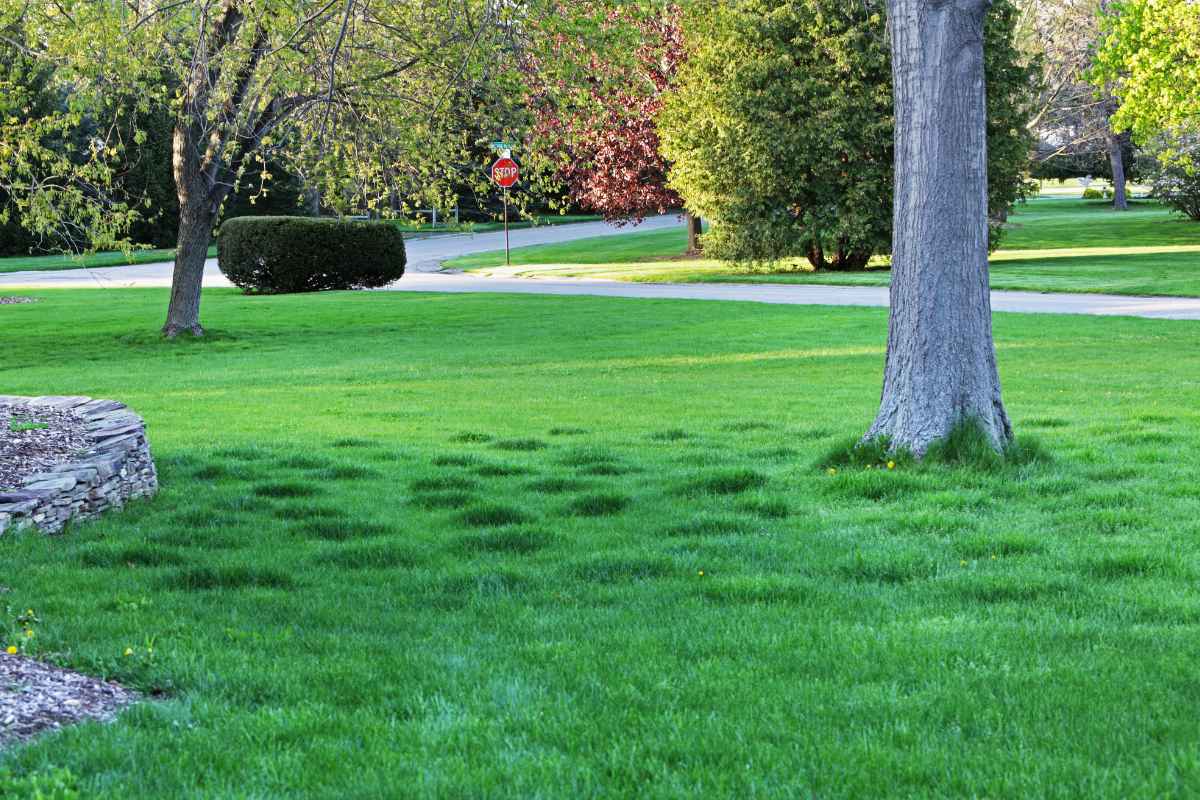
Is your lawn suffering a sudden identity crisis due to ruts, low spots, small hills, or ridges, leading to a bumpy lawn? An uneven lawn also presents a safety hazard for your home, leading to drainage issues and water damage. Fortunately, you don’t have to be a lawn care expert to restore the lawn’s once-immaculate appearance with these tips on how to level your yard.
Why Should You Level Your Yard?
An uneven lawn can reduce the curb appeal of your home and is dangerous:
- Injuries can occur due to trips and falls caused by uneven ground.
- Drainage issues can develop, leading to pooling in your yard.
- Damage to your home’s foundation can happen due to hydrostatic pressure.
How to Level Your Lawn
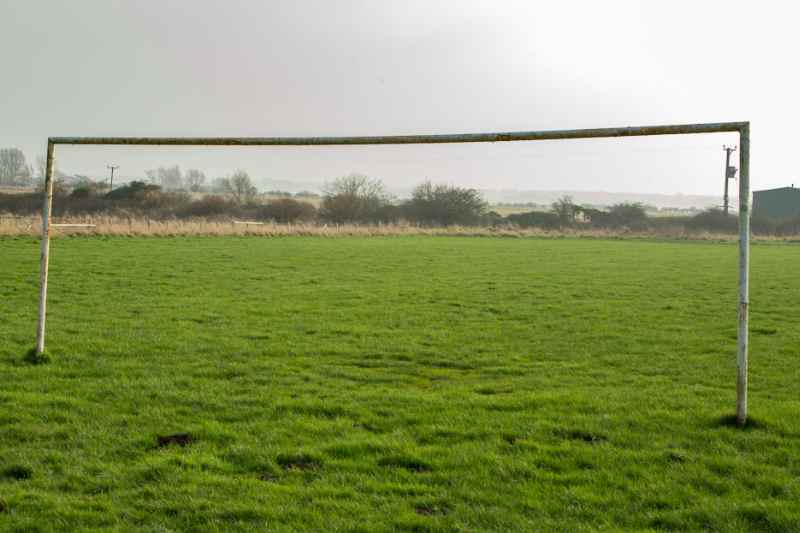
The severity of the ruts and higher spots in the turfgrass determine which method works best for getting back a level lawn area.
What You Need To Level a Lawn
A few simple tools, materials, and time can solve your lumpy lawn problems. Here are the tools and materials needed:
Tools:
- Lawn mower
- Dethatching machine or a thatch rake
- Shovel
- Bow rake (aka garden rake), push broom, or lawn leveling rake
- Wheelbarrow
- Piece of 8-foot lumber or a long level
Materials:
- Sand
- Topsoil
- Compost
How to Find Uneven Spots in Your Lawn
Use a level or a piece of 8-foot lumber with strings attached on each end to find the low and high spots in the lawn. (Just drag the lumber over the lawn and look for empty space underneath the level or whatever straight edge you’re using.)
Pro Tip: As you level the lawn, make sure that water always flows away from your foundation. A slope or “grade” (here’s how to measure grade) of at least 1/8″ per foot away from your house is best.
Prep Work Before Leveling Your Yard
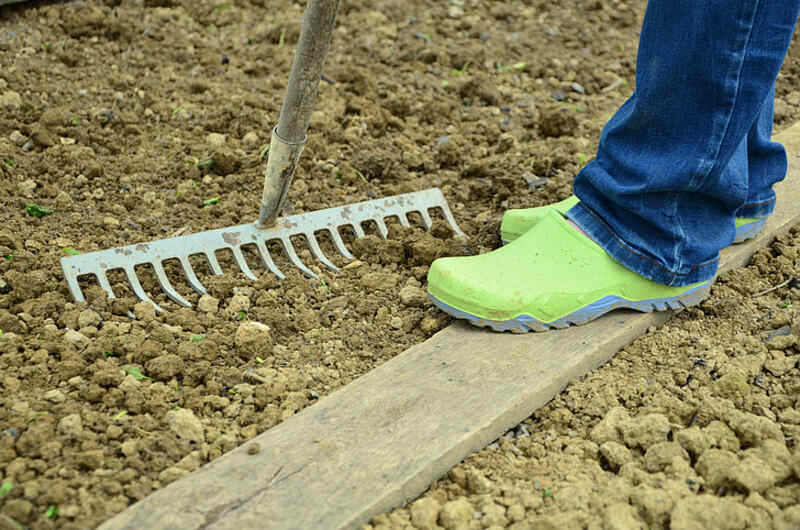
In a few simple steps, you can prepare your uneven lawn for leveling. Before you begin leveling:
A few weeks before, if needed:
- Dethatch your lawn. With a thatch rake or dethatching machine, remove the excess thatch layer. Excess thatch keeps your grass from absorbing water and nutrients properly.
- This is a good time to aerate your lawn to improve any compacted areas. Aeration also allows you to fill any remaining low-lying areas with plugs.
The day of:
- Remove all the dead leaves, twigs, clippings, and other debris from the area.
- Mow the lawn because it may be a few weeks before you’re able to cut the grass again. Also, you want to make it easy to remove turf in the higher spots.
Level a Slightly Uneven Lawn: Topdress
Now that you know what you need for this task and the prep work to do beforehand, let’s talk about how to level a lawn. If you have only minor unevenness in lawn areas where the depressions aren’t too deep, you can solve the problem by topdressing your lawn with a topdressing soil mixture.
This type of yard leveling repair is the least labor-intensive and least expensive. Here’s a step-by-step:
- Create a topdressing: Using a wheelbarrow, create a mix by combining equal parts sand, compost, and topsoil. If you have finely textured soil like clay, avoid using sand.
- Apply topdressing: Add a thin layer of no more than 1/2 inch of the soil mixture to the low areas in your yard.
Do not apply the topdressing mix any deeper, or you can suffocate the grass. You can apply more over time if needed.
- Smooth the soil mix into the lawn: Use a garden rake, push broom, or lawn leveling rake to spread the soil mix evenly over the low spots. Work the soil into the base of the grass blades.
If the grass was originally growing in the sunken areas, you should see new grass growth popping up through the soil mixture. If the area still is a bit low, repeat the above steps until the turfgrass is level.
Expert Tip: If the uneven areas lack grass before you apply the topdressing, you need to overseed the lawn to promote new growth. Keep the area moist while the grass seed germinates and takes root. Watering your growing grass the right way is key. The best time to water your lawn is early morning and up to three times a day.
Level a Moderately Uneven Lawn: Remove Sod
If areas of the lawn have more moderate and numerous problems with low areas and higher spots, it will take a bit more work to bring it back in shape.
- Mow your grass: For ease in applying your soil mixture and seeing where all the bumps and depressions are. Cut it shorter than usual but not short enough to see the stems of the grass blades. (Don’t scalp the lawn.) If desired, you can use stakes or marking flags in areas that need attention.
- Smooth high spots: If you own a lawn tractor, you can smooth out any higher areas by attaching a wooden pallet to the back and dragging it over them. (As an alternative, attach a rope and drag the pallet around yourself.)
Work the high spots with a garden rake or lawn leveling rake until it’s all on the same level.
- Remove sod: Dig up and remove your sod. Place it in a shady location until you are ready to replant.
- Fill the low spots with your leveling mix. Once filled, water the area to release any air pockets in the soil and continue backfilling with the soil mixture until the recessed areas are level.
- Replace the repaired areas with the removed sod or lay new sod. Make sure the roots have good soil contact. Keep traffic to a minimum and water once or twice per day for several weeks while the sod takes root.
Level a Severely Uneven Lawn: Call in a Pro
If your lawn looks more like the moon’s surface than an earthly yard, refurbish the entire area. Of course, this process comes with the most cost and labor, and it’s best to hire a pro.
When low areas and high spots are too numerous, it will generally require:
- New grading: Grading is the process of altering the slope and drainage of your yard. It’s best left to landscape experts.
- Soil preparation: Test your soil and add the amendments your new, healthy lawn needs.
- Re-seed or lay sod: You can start your lawn anew by planting grass seed, or take a quick approach and lay new sod.
Expert Tip: Never smooth out a rough lawn or lay down new sod with a heavy lawn roller. A grass roller can harm your healthy grass and cause further compaction.
The Best Time to Level Your Lawn
Now that you know how to level your lawn, it is also important to know when is the best time to do it: Anytime from March to September, when the grass is actively growing.
However, spring is the best time to level your warm-season lawn because that’s when warm-season grasses are growing after being dormant for the winter. Cool-season grasses will do better if you level in late summer or early fall.
If your lawn is suffering from drought, pests, disease, or becomes waterlogged, you should wait. Take care of these problems first before leveling your lawn. To avoid a muddy mess, it’s important to level your grass on a dry day.
What Causes an Uneven Yard
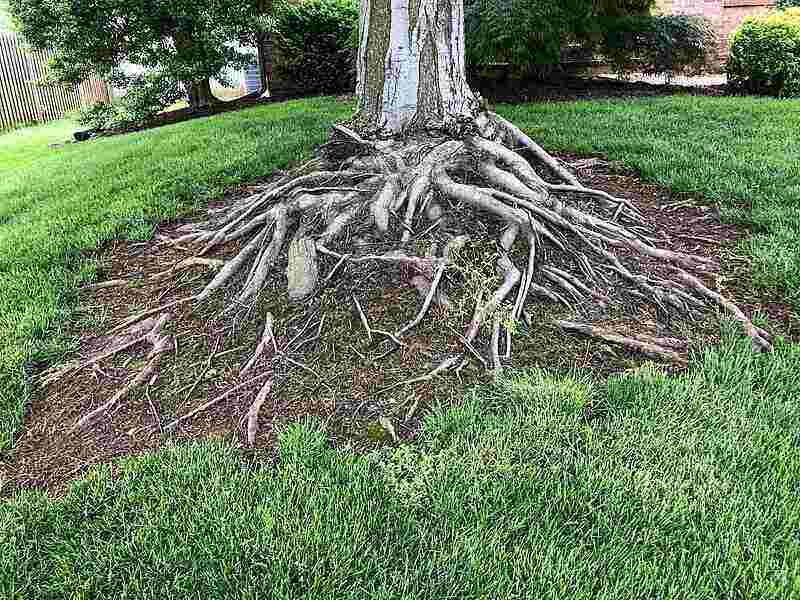
Photo Credit: Famartin / Wikimedia Commons / CC BY-SA 4.0
Areas of your lawn and even the entire lawn can become uneven over time. This is especially true for older, established lawns. The common sources for creating low areas or higher spots include:
- Compaction: The soil underneath your lawn may become compacted by high traffic.
- Hardscaping: New fences, sidewalks, or other hardscapes installed by you or your neighbor can change water flow.
- Digging animals: Animals such as gophers, ground squirrels, voles, and even your pets will leave holes in your yard.
- Seasonal changes: The freezing and thawing of water in the soil change the landscape.
- Pest or disease: Divots in the grass arise from insects like lawn grubs eating away at the grass roots. Lawn diseases also cause changes to the infected area. When grass dies or thins, erosion may set in and cause the area to become uneven.
- Tree roots: The roots of trees can disrupt the soil beneath them, elevating the ground surface.
- Broken pipes: The soil might erode as a sprinkler system leaks or from other plumbing issues.
- Poor lawn care habits: Mowing your turfgrass at too low a height can quickly lead to uneven lawn problems. You end up scalping the turfgrass with the mower blades, damaging the roots, which may lead to thinning or death of the grass plants.
Cost to Level a Yard
If you enjoy DIY projects, you’ll save a significant amount of cash if you prepare (aerate, dethatch, mow) and level your own lawn versus the cost of professional lawn care service.
You also have the option of slowly building up the uneven areas of your turfgrass over time, creating a less labor-intensive repair.
You’ll have zero costs for all the tools you already own, with additional costs going to:
- Soil improvements with amendments
- New sod or grass seed
- Potentially having to rent an aerator. Depending on the type, they’re typically $100 to $150 a day.
Of course, you also have the option of adding an inexpensive hand aerator to your lawn tool collection with costs starting around $25. Non-motorized walk-behind spike aerators start around $60. However, the cost of push-corers that you tow behind a riding mower might reach $350. A motorized core aerator machine starts at around $3,000.
Cost of Grass Seed
The cost of turfgrass seed per pound varies depending on the type of grass and the amount you require. So, overseeding patchy areas of existing grass will cost less than seeding an entire lawn.
Depending on the lawn service you hire and the number of square feet that require replanting, the cost of the grass seed alone can set you back $500 to $1,500 or more. This doesn’t include the costs for labor, which can run you another $500 to $1,000, depending on the size of the job.
| Cost to Seed an Average Lawn | |||
|---|---|---|---|
| Grass Type | Avg. Cost / Lb. | Coverage Per Lb. | Cost, Avg. Yard* |
| Bermudagrass | $3-$9 | 500 sq. ft. | $105 |
| Centipede | $2.50-$5 | 188 sq. ft | $174 |
| Bahia | $5-$7 | 200 sq. ft. | $261 |
| Fescue | $2.72-$3.58 | 171 sq. ft. | $160 |
| Ryegrass | $2-$3 | 150 sq. ft. | $145 |
| Kentucky bluegrass | $5-$6.43 | 643 sq. ft. | $784 |
| Mixed | $1.80-$3 | 20 sq. ft. | $1,045 |
| *Average yard size of 0.2 acres. Calculated at the midpoint of the price ranges. Source: Inchcalculator.com, October 2019 |
|||
Sod: DIY Cost vs. Professional Installation
Repairing your now-level lawn with new sod offers instant greenery, and there’s no need to wait for grass seed to germinate to reach a lush appearance. It’s also more reliable than sowing grass seed as it takes minimum care for the roots to take hold in the soil and requires less water.
Depending on the amount of sod required, it’s more costly than seeding or overseeding, which includes labor if you hire a professional.
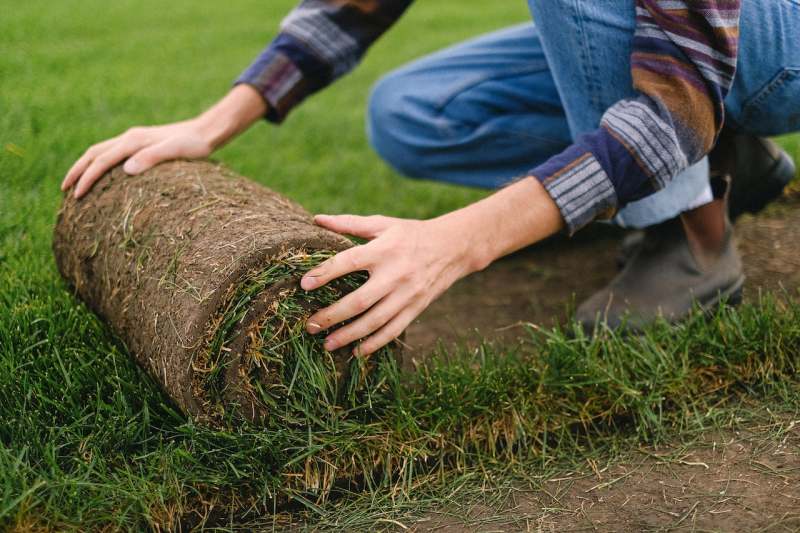
One option for installing sod is to do it yourself. It’s labor-intensive and time-consuming work, but it is usually cheaper. Keep in mind that, although professional sod installation costs more, the results are usually better than when you install sod yourself.
- DIY cost of sod: Between $0.30 to $0.83 per square foot, depending on the type, region, and amount of new lawn required. Plus, possible additional costs for supplies.
Average range for 1/5-acre of sod: $2,614 to $7,231
- Sod with professional installation: Runs around $0.87 to $1.76 per square foot for sod and labor. Depending on the cost and amount of new sod required, you can expect to pay a professional several thousand dollars to install it.
Average range for 1/5-acre of sod and labor: $7,579 to $15,333
Two of the most expensive sods are Bermudagrass and Zoysia, with St. Augustine being a bit less costly.
How to Keep the Yard Level
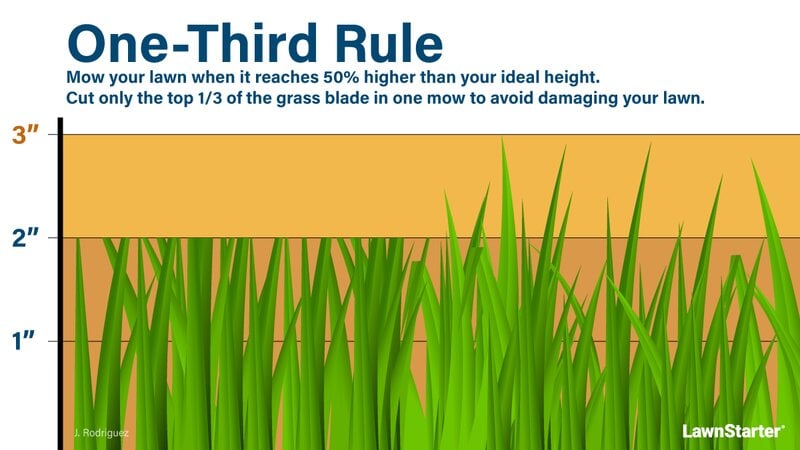
Regular and proper lawn care goes a long way in keeping your lawn free of ruts and higher spots. Healthy, thick turfgrass promotes fewer problems and leads to a level yard. To keep things healthy:
- Mow at the proper height: Follow the one-third rule and cut only the top one-third of the grass when you mow.
- Fertilize as needed: Your grass must be well nourished and healthy to create strong roots to protect your soil. You also make your own fertilizer at home if you want a cheap alternative.
- Overseed bare areas: The best times for overseeding are after the summer, around mid-late September into early October for cool-season grasses, and spring up to early July for warm-season grasses.
- Aerate and dethatch regularly: Compacted soil and thick thatch prevent water and nutrients from reaching your grass.
When properly maintained, your turfgrass develops into a healthy specimen able to fend off pest and disease problems, and best of all, you end up with a level lawn.
FAQ: Tips for Leveling Your Yard
Is Topsoil the Same as Topdressing?
No. Even though topsoil by itself can help you level your lawn, it lacks the important nutrients, consistency, and microbes found in the organic matter of a topdressing mixture, which benefit your lawn.
How Long Does New Sod Take to Develop a Root System?
Sod normally takes root after 14 days. The root system has grown when the sod becomes difficult to pick up off the ground. Avoid disturbing your sod during the first two weeks.
What Kind of Sand Do You Use for Topdressing?
Play sand is best because of its small granules. It improves drainage and allows nutrients into the soil. You will find play sand at most home or garden centers.
DIY or Hire a Professional
If quickly caught and repaired, most lawn-leveling tasks are basic and require a minimum of supplies and sweat. The determining factor is how much work you are willing to do to correct the problem or if you’d prefer to hire a landscape professional to do the lawn-leveling labor for you.
Main Image Credit: Willowpix / Canva Pro / License